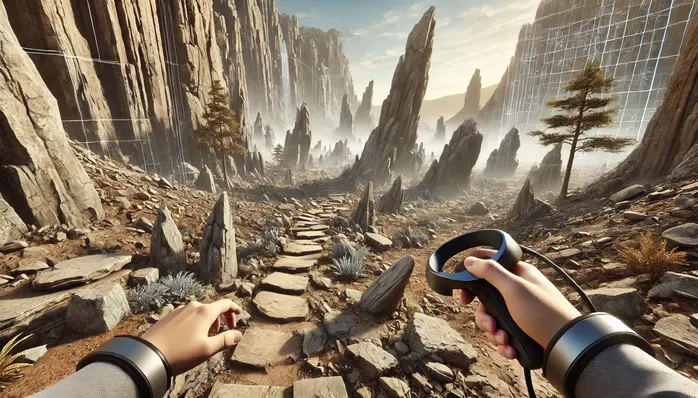Capturing M.I. Space
Evolution Over Time

M.I. Space Evolution
Follow the ongoing journey of M.I. Space as it evolves through each stage of development. Discover the key milestones, innovations, and research insights driving its approach to creating a personalized, accessible educational tool.
1
Vision & Inspiration
2
Concept & Inception
3
Research Insights

4
Initial Framework
5
VR Development
6
Coming Soon.
1 - the vision
The concept of M.I. Space began with Dr. Howard Gardner’s theory of Multiple Intelligences, which challenges the traditional, one-dimensional view of intelligence by emphasizing diverse ways individuals excel.
Recognizing that many educational systems still prioritize linguistic and logical-mathematical skills, often overlooking other intellectual capacities, M.I. Space was conceived as a way to address this gap.
The tool’s draws its foundational inspiration from Dr. Howard Gardner’s work in Multiple Intelligences, while still integrating insights from other pivotal works in personalizing education.
(Please be advised that this tool is not officially endorsed by Dr. Gardner.)

2 - inception
a glimpse into the cognitive rabbit-holing process conceptualizing M.I. space
What if education could genuinely adapt to each individual’s unique cognitive strengths?
The answer lay in envisioning an educational approach that celebrates diversity in cognition, providing a way for learners to develop in alignment with their natural abilities rather than conforming to a rigid standard.
Dr. Gardner's work provided a framework, but there were other questions to be considered:
-
to what extent can we nurture the full spectrum of human intelligence without jeopardizing students' performance on standardized tests - which remains significant in the current educational landscape?
-
how can tools that assess multiple intelligences avoid unintentionally labeling learners as “less capable,” ensuring that cognitive profiles are valued for their merit in personalizing learning, rather than creating perceived hierarchies?
How can technology, (VR and AR), bring these ideas to life in a practical, engaging way?
The possibilities of VR and AR extend beyond mere simulation—they offer transformative potential to make abstract concepts tangible and to enable self-directed exploration.
More can be found about this exploration in part 5.
What would make this both scientifically grounded and engaging?
Incorporating insights from educational research, each component needed to balance scientific accuracy with interactive appeal.
M.I. Space integrates neuroscience principles to create an engaging, scientifically grounded educational experience. Leveraging studies in biology, psychology, and other cognition-related fields, (for example - neuroplasticity, error-based learning, and cognitive load management), M.I. Space designs tasks that stimulate multiple sensory pathways and reinforce motivation.
The multi-sensory nature of VR and AR tasks activate diverse cognitive pathways, making learning immersive and personalized.
More can be found about this exploration in part 3.
3 - research insights
highlights of significant research processes and developments

Exploring Biological Mechanisms of Intelligence
1. what happens in the brain as a specific intelligence is utilized?
2. what evidence is there of varying degrees of accessibility to this intelligence?
3. what evidence is there to demonstrate a higher order / proficiency in usage?
4. is there correlation between the amount of activation / etc in portions of the brain (related to a specific intelligence) and the degree to which we are proficient in that intelligence?
5. to what extent can we determine how developed the intelligence is from biology?
6. are technologies used to assess these ideas accessible? to what extent?
Research in Educational Pedagogy
Integrating KEY Pedagogical Insights to Shape Personalized Learning
-
Constructivist Learning Theory: Tasks emphasize active, hands-on learning, allowing learners to build knowledge through direct interaction.
-
Zone of Proximal Development (ZPD): Challenges are designed to push learners just beyond their current abilities, fostering growth with supportive scaffolding.
-
Differentiated Instruction: Tasks adapt to individual cognitive profiles, aligning content with strengths while addressing areas for growth.
4 - initial framework
process of synthesizing research and conceptualization for a foundational framework
process of
synthesis with spatial intelligence

setting criterion to assess M.I. tasks

potential criteria:
defining sections
-
criterion & descriptor
-
short phrase denoting the criterion
-
short clause describing the definition
-
defined sub criterion which must be met before:
-
1. task period ends, 2. criterion performance assessment begins
-
-
task period ends - prescribed standards met
-
what kind of checkpoint meets the end of 1, begins 2
-
-
-
-
applicability
-
for use - indicators for the use of criterion (for a given task)
-
for disuse - indicators against the use of criterion (for a given task)
-
2 sentence explanation - use of criterion for task
-
-
denotative VERSUS connotative definitions:
-
denotative meaning for task - defined usage of criterion’s words
-
clear sub criterion - must be met BEFORE criterion assessment begins
-
-
current limitations in:
-
definition of criterion
-
applicability of criterion to a specific task
-
measurement of criterion’s prescribed standard
-
further research / thought required for task specifics
-
5 - AR & VR
collection showcasing early conceptual designs for M.I. Space VR environments

"home" - area concept
visual concept of the home area users reside in
spatial intelligence (IN DEVELOPMENT)
example of task - navigating rocky terrain - to asses spatial intelligence
- white borders are error vectors for accessing accuracy -


musical intelligence task (CONCEPT)
example of task - arranging musical sequences - to assess musical intelligence
6 - coming soon
pilot testing & development for less quantifiable metrics (eg. creativity)